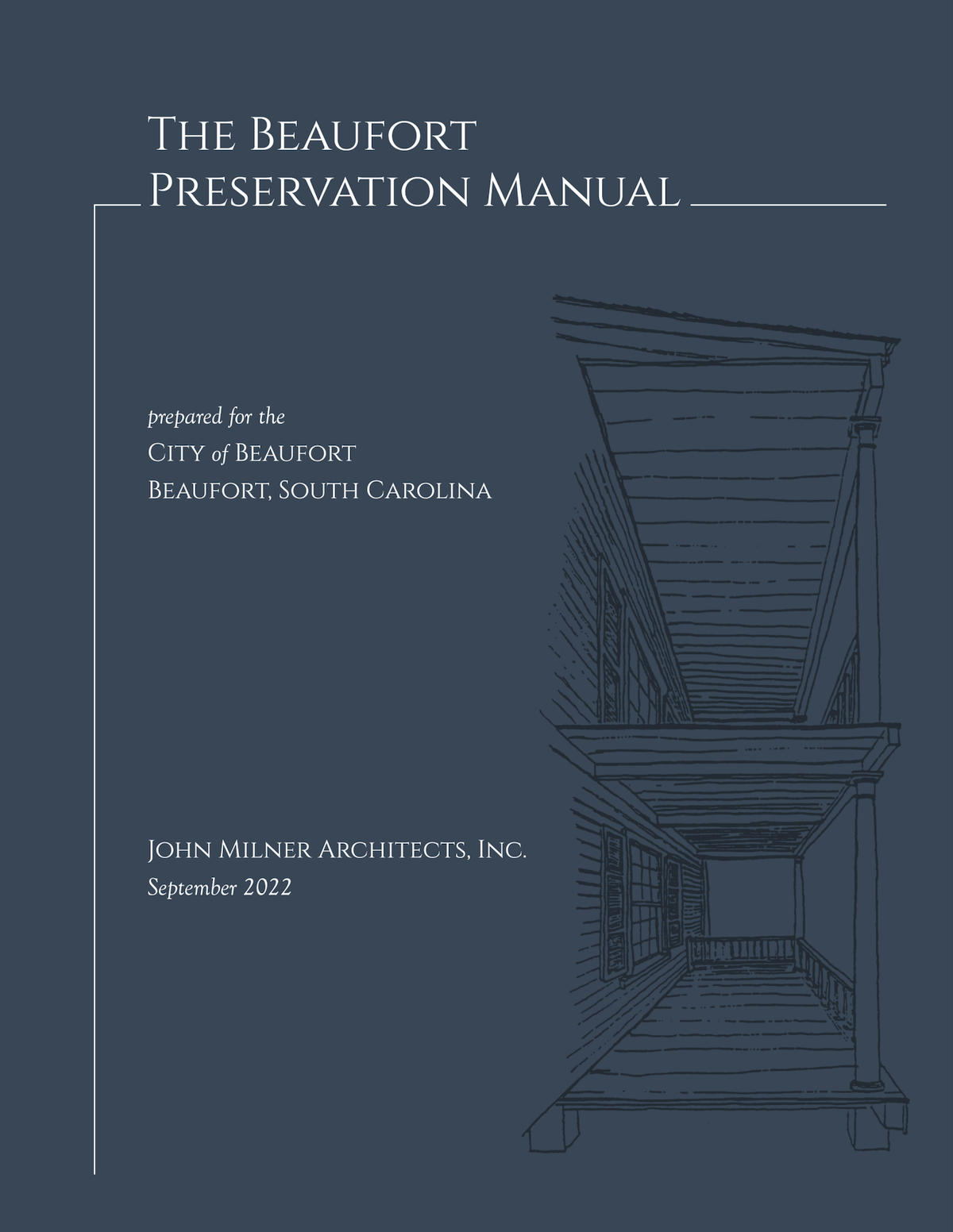From staff reports
The City of Beaufort has taken another major step in its commitment to its National Historic Landmark District and the Northwest Quadrant with the publication of the new Beaufort Preservation Manual. The updated manual, often referred to as the Milner Report, after the architectural firm that put together the original manual and this latest version, has been posted to the City’s website where it will be easily searchable.
City Council approved the adoption of the manual at its Nov. 15 meeting.
Among its improvements, the new manual:
– Reflects current best practices in the preservation field;
– Updates recommended materials for renovations, repairs, new construction;
– Cross-references and ties into the Beaufort Development Code;
– Makes recommendations for various repairs and treatments to buildings; and …
– Includes pictures.
“The Preservation Manual was last updated over two decades ago,” Beaufort Mayor Stephen Murray said in a news release. “It was long overdue to update this critically important document to help guide the continued preservation of our historic structures in a more accessible and convenient way. City Council is grateful to all involved, especially the volunteers on our Historic District Review Board for their time and expertise.
The process
In the spring of 2021, the City of Beaufort contracted with John Milner Architects, the Pennsylvania firm that produced the original report in 1979, along with various updates and a separate publication called Northwest Quadrant Design Principles. Milner is one of the premier architectural firms in the country that specializes in historic preservation and restoration.
The City paid Milner $29,430, of which half was from a Historic Preservation Grant from the South Carolina Department of Archives and History.
Shortly thereafter, Milner’s team visited Beaufort and began to work on the update. City of Beaufort staff and the Historic Beaufort Foundation, a partner on this project, worked closely with Milner during this time.
The draft was presented to the City and the Historic District Review Board (HRB) in early 2022, and then began the next part of the process: The HRB set aside special two-hour work sessions throughout the winter and spring to review each chapter and sent recommended changes back to Milner.
On Aug. 31, the HRB voted to recommend adoption of the new Preservation Manual.
Jeremiah Smith, chairman of the Historic Review Board, said, “Having all the information in one document is certainly a benefit to reviewers and applicants. A big plus of the revised manual is the inclusion of relevant current materials and the removal of references to outdated materials. The update included clearer language and using current names of buildings that otherwise may have been confusing.
“A big goal was to make it more readable and more likely that homeowners will use it,” he added. “We want it to be a valuable resource for residents and applicants working in the Historic District.”
The changes
One example of how the manual has been changed has to do with windows, said Jeremy Tate, City of Beaufort staff architect who worked closely with Milner and the Historic Review Board.
“There has been lots of variety in window materials and manufacturing techniques since the manual first came out,” he said. “For example, vinyl is now used commonly for windows. That is still not appropriate for historic buildings but it may be OK for new construction in the Historic District.”
The updated manual gives other recommendations for aluminum-clad and fiberglass windows as well, he noted.
Another example is roofing material, particularly metal. Terne metal, an alloy of lead and tin, was often used for the roofs of historic homes. It is no longer available. Current options mentioned in the manual include terne-coated stainless steel, copper, painted steel, and painted aluminum.
Any construction or renovation in the Historic District will still be considered on a case-by-case basis by the Historic Review Board, Tate said.
“This manual is a guide but will never provide definitive answers for every decision that the board has to make,” he said.
HBF Executive Director Cynthia Jenkins, who worked with Milner architects on the initial project and the update, noted that Beaufort was one of the first cities in the United States to commission a guide for building and restoration in a nationally recognized historic district. The original report, with its detailed drawings and its focus on the “Beaufort Style,” became a collector’s item of sorts.
“It was not uncommon to find it on people’s coffee tables,” Jenkins said.
“The main thing we were concerned with,” she said, as the City sought to update the manual, “was that it be searchable online and more user-friendly. Now if you want to look something up, you’ll be able to find it in 30 seconds, not 30 minutes.”
“There is so much we need to protect as we move forward,” Jenkins said. “I hope the new Preservation Manual will help people appreciate the uniqueness of this place, and to understand and embrace it.”
WHERE TO FIND IT
You can find the 2022 Beaufort Preservation Manual on the City of Beaufort’s website at https://bit.ly/3C7MVgS. Use Control F to search for a term, or click on the chapter headings to go to a specific chapter.









